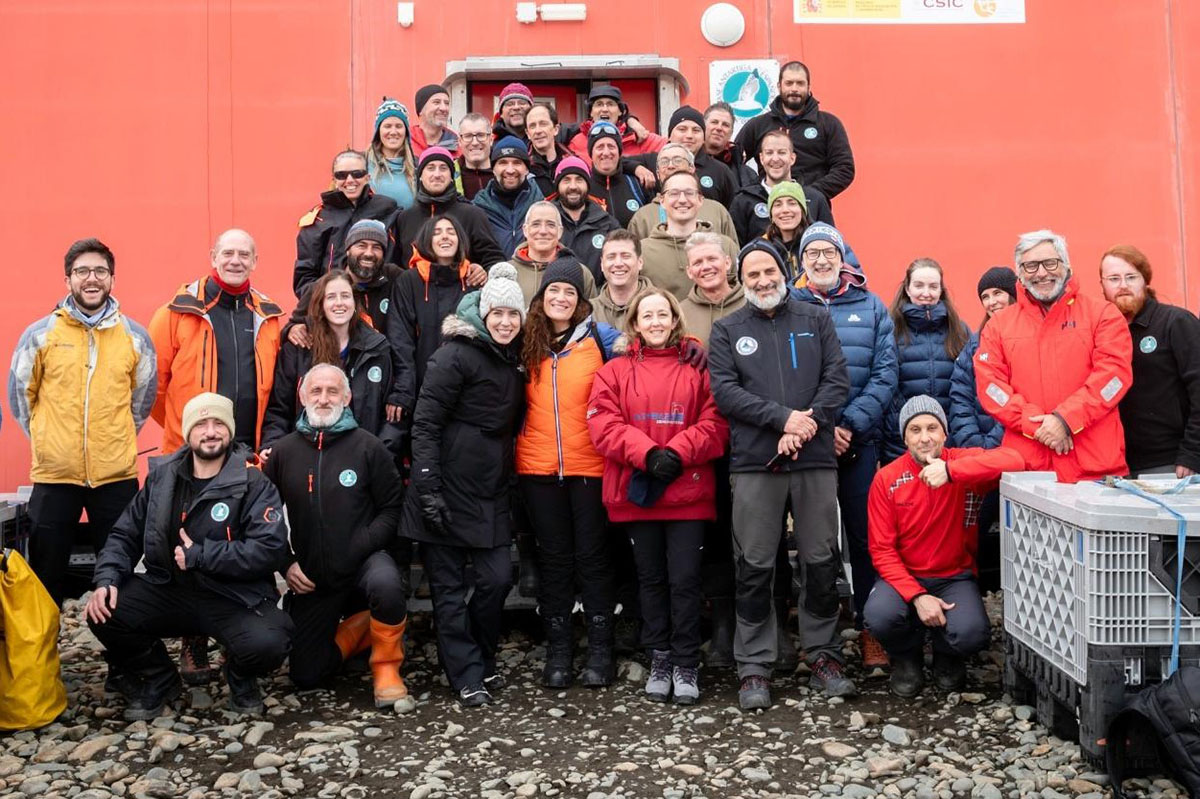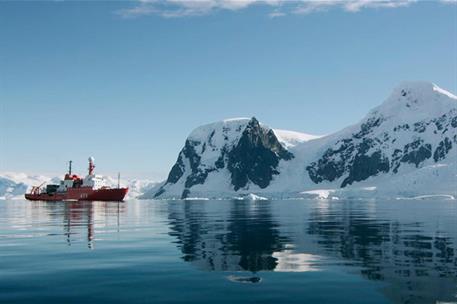 The Minister for Science, Innovation and Universities, Diana Morant, poses with the scientists working at the 'Juan Carlos I' Spanish Antarctic Base
The Minister for Science, Innovation and Universities, Diana Morant, poses with the scientists working at the 'Juan Carlos I' Spanish Antarctic Base
The Minister for Science, Innovation and Universities, Diana Morant, has visited the 'Juan Carlos I' Spanish Antarctic Base [Base Antártica Española (BAE)], on Livingston Island, operated by the Marine Technology Unit of the Spanish National Research Council (CSIC).
During the 38th Spanish Antarctic Research Campaign, which began at the end of December 2024 and will end in March 2025, several of the 28 scientific projects as part of the current campaign, most of them funded through the European Research Executive Agency (REA), will be carried out at this Antarctic base.
Morant highlighted "the incredible work of Spanish scientists in Antarctica, Spanish talent working on research to combat threats like climate change" and reminded us that "we must take care of our Planet, also based on scientific evidence, to take care of our own life".
One example is the 'TRIPOLI' project being carried out by the University of Valladolid, which aims to determine atmospheric components in polar areas and their impact on the climate. These observations will pave the way for establishing a stable set of atmospheric aerosol, cloud and water vapour measurements using a novel methodology. The results obtained will be key to quantifying the changes in these parameters within the Antarctic area as a consequence of climate change.
The 'GEOCHEM' project, also funded by the REA and led by the Centre for Energy, Environmental and Technological Research (CIEMAT), with participation from the Spanish Geological and Mining Institute (IGME-CSIC) and the German GFZ Institute, focuses on analysing the past and present effects of climate change and human impact on the geochemistry of the land surface in ice-free areas of Antarctica.
The expected results of this project will allow innovative methodologies and tools to be developed in order to predict and manage upcoming scenarios in a context of global warming and possible increase in anthropogenic pressure on Antarctic ecosystems.
The 'Juan Carlos I' base also carries out studies on microplastics being transferred along the coastal food webs of the Southern Ocean and the Southwest Atlantic, or the relevance of environmental and microbial factors in the diversity of Antarctic terrestrial ecosystems, for example.
The 'Juan Carlos I' base covers a surface area of 2,150 m² for use by scientific and technical personnel, and can house up to 51 people. It is located on the Hurd Peninsula of Livingston Island in the South Shetland Archipelago, 40 metres offshore and 12 metres above sea level, in the vicinity of Queen Sofia Mount.
The minister was accompanied by the Secretary General for Research at the Ministry of Science, Innovation and Universities (MICIU), Eva Ortega, and the President of the Spanish National Research Council (CSIC), Eloísa del Pino.
Thirty-eighth Spanish Antarctic Research Campaign
The 38th Spanish Antarctic Research Campaign, which began at the end of December 2024 and will end in March 2025, is coordinated by the Ministry's Spanish Polar Committee and involves participation from around 300 people, including scientists, technical and logistical support staff.
The MICIU finances the scientific infrastructures for this Campaign with nearly 18.5 million euros, 9% more than the previous year. The REA is also financing 21 research projects for a total amount of 4.6 million euros, representing over 90% of the scientific activity as part of this Campaign.
In addition to the Spanish projects, in which scientists of other nationalities will participate, the Spanish Campaign's staff and bases are providing logistical support to projects in Portugal, Germany and Italy.
The 'Gabriel de Castilla' and 'Juan Carlos I' bases, together with the 'Hespérides' and 'Sarmiento de Gamboa' research vessels, form part of the Spanish map of Singular Scientific and Technological Infrastructures (ICTS). This guarantees access to the entire scientific community and provides Spain with cutting-edge infrastructures for research in polar regions.
Non official translation





